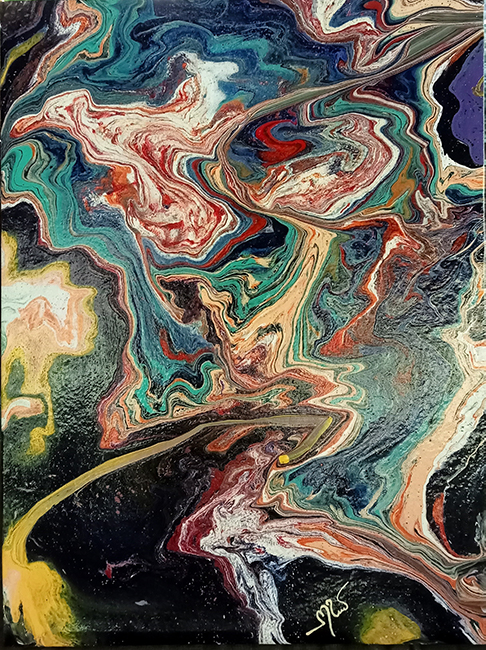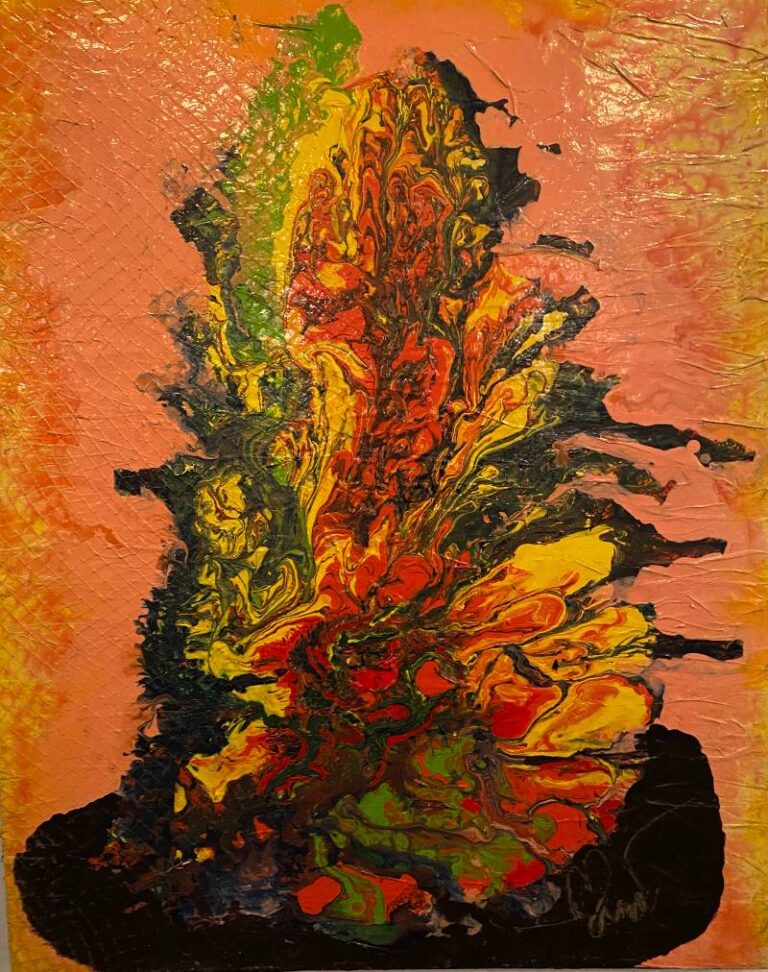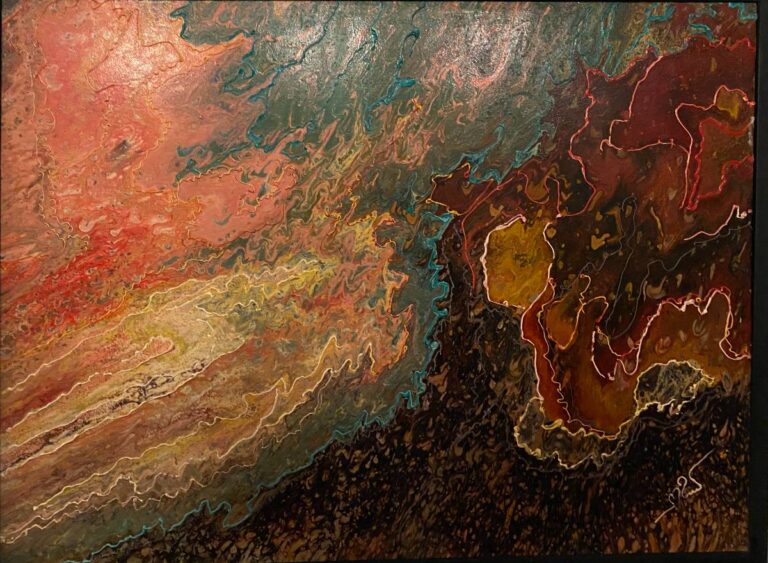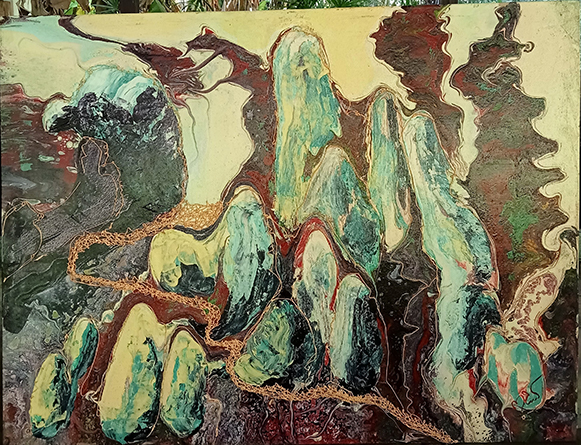ວຽງໄຊ ແມ່ນນັກສິນລະປິນຮູບແຕ້ມ ແລະ ລະບາຍສີ ນັບຕັ້ງແຕ່ຕອນທີ່ລາວມີອາຍຸໄດ້ 9 ປີ. ລາວບໍ່ເຄີຍສະແຫວງຊອກຫາແຮງບັນດານໃຈຈາກນັກສິນລະປິນຄົນອື່ນໆ, ໂດຍລາວເລືອກທີ່ຈະສ້າງສັນຜົນງານສິນລະປະດ້ວຍຕົວເອງ. ລາວບໍ່ເຄີຍໄດ້ຮັບການສະໜັບສະໜູນຈາກຜູ້ຄົນອ້ອມຂ້າງໃນການເລືອກທີ່ຈະເປັນນັກສິນລະປິນ, ດັ່ງນັ້ນ ລາວຈຶ່ງເກືອກກີ້ງຢູ່ໃນອາຊີບຕ່າງໆຢ່າງຫຼວງຫຼາຍເພື່ອຫາລ້ຽງຊີບປະຈໍາວັນ. ລາວໄດ້ຢຸດການແຕ້ມຮູບ ໂດຍມອບໝາຍໜ້າທີ່ເພື່ອອຸທິດຕົນໃຫ້ກັບຜົນງານສິນລະປະຂອງລາວພຽງລໍາພັງ ປ່ອຍໃຫ້ຈິນຕະນາການດໍາເນີນໄປໂດຍທີ່ປາດສະຈາກຂໍ້ຈໍາກັດຂອງໝູ່ເພື່ອນ, ຄອບຄົວ, ສິນລະປິນ ແລະ ຜູ້ຄົນອື່ນໆ. ລາວໄດ້ມີການຄົ້ນຄິດເຕັກນິກ ແລະ ເຄື່ອງມືແບບໃໝ່ສະເໝີ ຊຶ່ງສາມາດຕອບສະໜອງຕາມຄວາມຄາດຫວັງ ແລະ ຈິນຕະນາການຂອງລາວໄດ້. ລາວຄົ້ນພົບເສລີພາບໃນການສະແດງອອກຫຼາຍຂຶ້ນໃນການແຕ້ມຮູບພາບນາມມະທໍາ.
Viengxay Phounsana
For him, art is everything and everything is art! he asserts with conviction. So, it’s naturally that he turned to art from his childhood. From 9 y.o., since and after he started drawing and painting, and he never stopped. To confirm this vocation, he tells an anecdote which reveals his mind of contradiction to face of established conventions: in primary school —he explains—, that he wanted to participate to an international drawing contest, when the teacher saw his artwork, he crumpled the paper sheet and threw it in the trashcan! He didn’t understand anything about Viengxay’s drawing. This incident confirmed his commitment and the desire to assert himself to be himself… not to respond to codified academic or aesthetic rules. Viengxay has never sought inspiration from other artists, he only wishes to create on his own, so that his works are the expression of his singularity and his freedom of thought. « Be yourself and know how to express yourself », he said.
He is aware that his painting is appreciated differently, but that does not matter to him. He was not supported by those around him in his choice to become an artist, and like many others, he dabbled in many professions to ensure daily life and above all to allow him to continue his artistic work. During his years of study at the University of Québec in Montréal (UQAM), he did not appreciate constraint of carrying out preparatory sketches, of constructing a thoughtful work, meeting pre-defined criteria… For him, this restricts the freedom to create, moreover as soon as he was able, he stopped paintings on commission to devote himself to his artwork alone, letting his imagination acts without the constraint of friends, family, artists, others.
To go further in his creation, he is always looking for new techniques, new « tools » that can meet his expectations and his imagination. But above all, he insists, he also lets the work live on its own. Sometimes an accident happens, a color drips out, an unexpected color mixture… he likes it and uses it. What he could have seen as a failure compared to what he had in mind at the start… he transforms it, sublimates it so that sometimes it becomes the main feature of the work.
This is also why he finds greater freedom of expression in abstract painting.




